| Zeitschrift Umělec 2003/2 >> Words Are Not Only Hot Air (Lenka Klodová: A place of pilgrimage — Neratovice) | Übersicht aller Ausgaben | ||||||||||||
|
|||||||||||||
Words Are Not Only Hot Air (Lenka Klodová: A place of pilgrimage — Neratovice)Zeitschrift Umělec 2003/201.02.2003 Radek Wohlmuth | anarchie | en cs |
|||||||||||||
|
Words Are Not Only Hot Air
Lenka Klodová: A place of pilgrimage — Neratovice Roughly two years ago (Dec. 1, 2001), in the Czech town of Neratovice, near where Mánesova and Benešova streets cross, up on a six-meter-high clay embankment that runs between the highways, paths and playgrounds, a sculpture was erected. Several massive three-meter handmade sandstone blocks were mounted on a concrete foundation, spelling out a one-word inscription. The word, weighing more than one ton, is not an unusual one: MILUJI (“I LOVE” in Czech). This statue has no precedents in the history of modern art here. The use of words has an important place in the work of Lenka Klodová (1969), who in recent years has become one of the most interesting young artists on the Czech art scene. She began using words as tools of spatial expression while still a student in Kurt Gebauer’s studio of universal sculpture at Prague’s Applied Arts College (VŠUP). In her fourth year, Klodová made the two-meter-high installation Seno (Straw), clearly her first mature work using words. Later, in the catalogue for a studio exhibition in Prague’s Richter Villa, Gebauer wrote about the work: “Silhouettes (stalks) jut out from the pile of straw, casting shadows on the wall where you can read words. The words, however, are not an advertisement, perhaps it’s a confession of love.” Two years later Klodová returned to working with words in her diploma work BOŽENA, an allegorical-votive installation. In homage to the writer Božena Němcová, she created the six letters of her first name, 170-centimeters high, made from Plexiglas and plywood. Inside the letters, light bulbs turned on or off, casting meaningful light and shadow accents on individual words present in the sculpture (“žena,” “bože,” “na” [woman, God, On]). This installation was instinctual in its physical documentation of Borges’s letter (text) theory of the “labyrinth of signs.” Her symbolic delimitation of gratitude also naturally contains within it a positive emotional charge. The creation of MILUJI, a place of pilgrimage, which was made for the Neratovice project called “A Brighter City,” is to this day the culmination of this part of Klodová’s work. If the two previous “letter works” had the character of an interior light installation, in this case the work, from a technical point of view, is a “traditional” stone sculpture designed for the outdoors, and inferior only in its use of natural light. Still, as in the work Seno, even here reality from the outside is the material only, and the “place of pilgrimage” is declared as being the civil-sacral dimension. All three works, then, have in common a relatively monumental design, a distinctly emotional flavor and especially the formal concept, whose presentation is the negation of imitative representation, with words as the basis of expressive signs. The reason? We live at a time which regards pictures and words as more real than things, and what is true is typically only that which is public. Still, it is clear that the writing is only an intervention. The word is a substitute that is obviously not what it says it is. But even though it is not capable of replacing the reality it symbolically introduces, it is capable of evoking fantasies and even giving off powerful feelings, precisely due to this lack of a real reality. The work is capable of producing a kind of withdrawal effect. Most viewers experience a harrowing feeling of separation between what is presented in a detached manner and what has been personally experienced — one who looks within. This sometimes even reaches the symbolic world of language. And the grand word “MILUJI,” especially regarding the industrial neighborhood of Neratovice, spontaneously sets off a whirlwind of questions. In and of itself it is something absolute; on the other hand, its expression in this form is far more hidden than open. Whoever reads it really does understand it, but cannot really know anything about it. While characterizing her own work, the artist broke up the ideas in relation to the word: intimacy + public; for you + for everyone; fragile + massive, physical; love + agitation; archetypes of feeling + archetypes of architectonics; impermanence + permanence. These are terms that frequently embody their own direct opposites. Regarding fundamental opposites, the word MILUJI is also full to the brim; for us the form the artist chose has the same mystical feeling as a prehistoric monolith. Hidden inside there are more than the one thousand and one stories — there is also the unbelievable number of images of love. Singer Květa Legátová gives this lucid expression: “Love is the most insignificant word in the human vocabulary. You could call everything love. Every passion, selfish habit, hatred, envy, even hatred and arrogance.” It’s not simply that opposites, contradictions, are contained in the work of Lenka Klodová, but that even there they have their own natural, non-theoretical place, and they make sense. This and that, the said/unsaid together with the monumental abstraction of the mythic form raises this sculpture above the standard stock of artwork in this country. At the same time, it has, in all its implications, the singular ability to speak to anyone without artistic compromise, and undermine, at least partially, the myth of modern art being elitist. The search for a standard in the relationship between the text and sculpture calls Flusser to mind, who wrote that one must take an interest in the structure of the text: the words, the rules that structure them, etc., and a large part of the work, of the informative result, lies in the model of the structure.
01.02.2003
Empfohlene Artikel
|
|||||||||||||
|
04.02.2020 10:17
Letošní 50. ročník Art Basel přilákal celkem 93 000 návštěvníků a sběratelů z 80 zemí světa. 290 prémiových galerií představilo umělecká díla od počátku 20. století až po současnost. Hlavní sektor přehlídky, tradičně v prvním patře výstavního prostoru, představil 232 předních galerií z celého světa nabízející umění nejvyšší kvality. Veletrh ukázal vzestupný trend prodeje prostřednictvím galerií jak soukromým sbírkám, tak i institucím. Kromě hlavního veletrhu stály za návštěvu i ty přidružené: Volta, Liste a Photo Basel, k tomu doprovodné programy a výstavy v místních institucích, které kvalitou daleko přesahují hranice města tj. Kunsthalle Basel, Kunstmuseum, Tinguely muzeum nebo Fondation Beyeler.
|







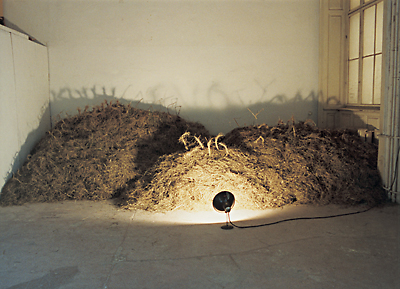














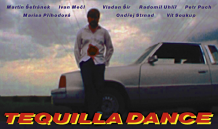




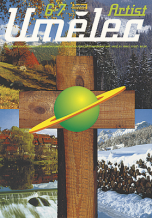
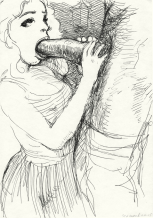
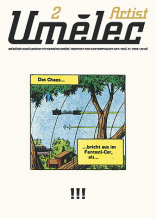
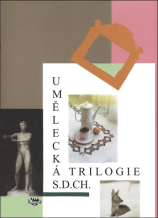


 Potsdamer Str. 161 | Neu Divus in Zwitschermaschine, galerie und buchhandlug in Berlin! | Mit U2 nach Bülowstraße
Potsdamer Str. 161 | Neu Divus in Zwitschermaschine, galerie und buchhandlug in Berlin! | Mit U2 nach Bülowstraße
Kommentar
Der Artikel ist bisher nicht kommentiert wordenNeuen Kommentar einfügen